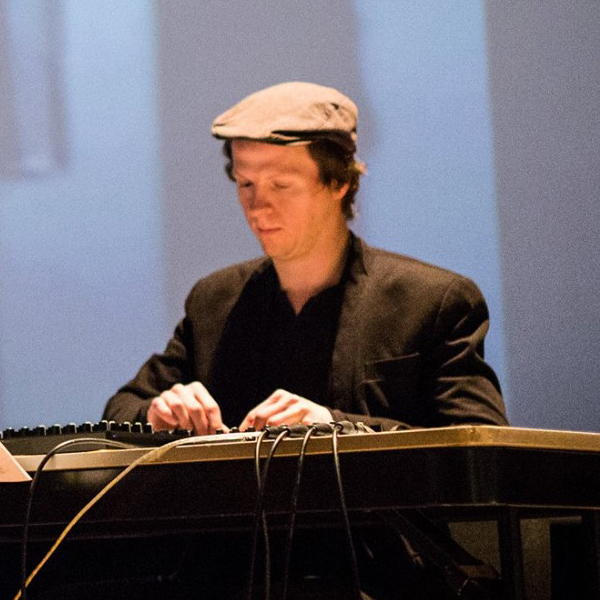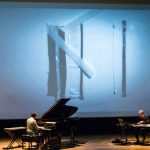Marcel Zaes

ISEA Bio(s) Available:
ISEA2016
Marcel Zaes (IT), a composer whose compositional method is always starting from the physical qualities of the sound itself, in a post-Griseyan sense, acts as a “listener” to Manzoni’s piano playing. Watching and observing the sonic pianistic space, he waits for the subtle artifacts produced out of Manzoni’s playing: the pretended “silence” between two notes which is never silent, the release phase of single notes, the other strings which start to resonate even when they are not played, or mechanical noises/failures of the piano’s pedals and keys when used. Zaes’ methods are based upon the idea of bringing advanced studio processing techniques onto the stage and performing these non-real-time algorithms in a “quasi real-time” version. Zaes places close-up microphones inside, around and underneath the instrument, even above Manzoni’s playing hands, and enters all these signals into his Max patches, where he catches single pianistic moments and elaborates them.
Furthermore, he adds pure sine waves and “dirty” idle mode noises of old-school analogue devices such as waveform generators that have originally been designed for military use. The processed piano, the sine waves and the generator’s idle mode noises define his sonic vocabulary. This first part of the composition process could be named the “composition of the sound itself”, in the Latin origin of the word “componere” and in a spectral way of composing. Now, with the yet defined sounds, Manzoni and Zaes as co-composers start the second part of the process; the traditional-musical composition, as they put their material together following quite traditional yet advanced rules of tonal-harmonic thinking, of melody and of formal structure.
This vast contrast between the spectral thinking on the material level and the more traditional thinking on the formal level not only produces a quite unique voice of “Sjö”, but also permits the duo to have their music reach a wider range of audience, thereby making advanced sound processing available to people who have never before heard such algorithms.





